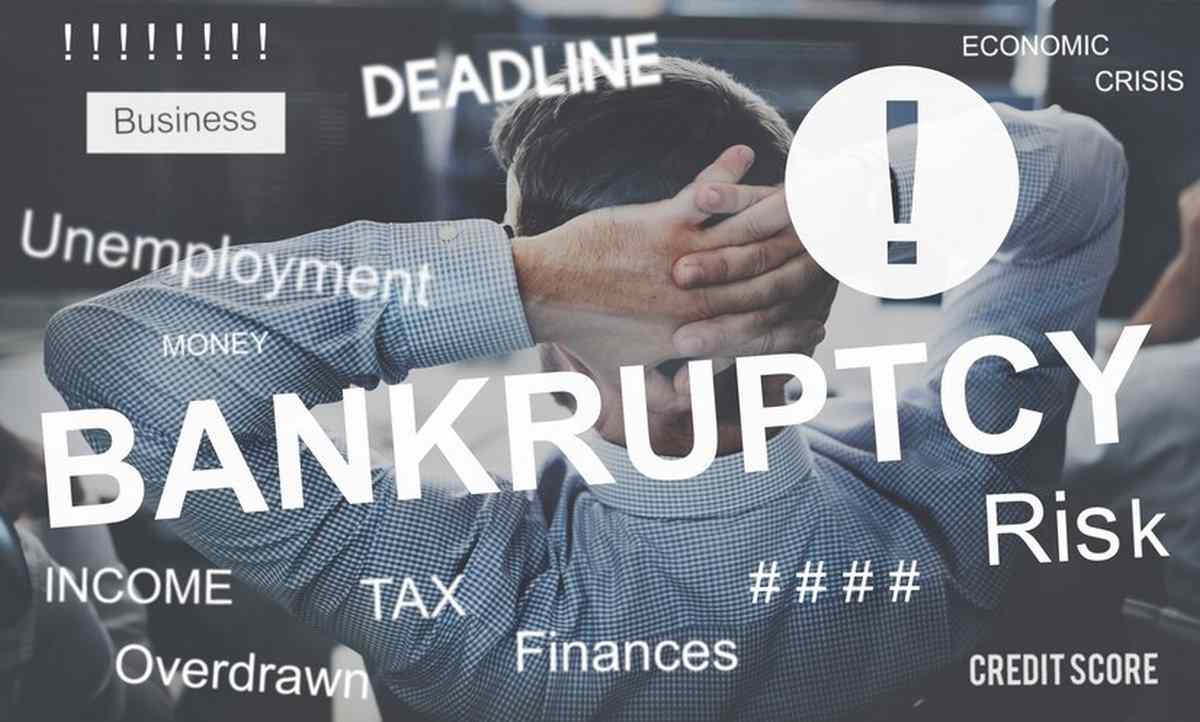Bankruptcy can feel like an insurmountable barrier, casting a long shadow over your financial future. However, with strategic planning and careful execution, it is possible to remove the stigma of bankruptcy from your records and rebuild a stable financial foundation. This guide will walk you through the essential steps, providing a comprehensive roadmap to regain your financial independence.

Understanding Bankruptcy
What is Bankruptcy?
Bankruptcy is a legal process designed to help individuals or businesses eliminate or repay their debts under the protection of the bankruptcy court. It offers a fresh start for those overwhelmed by financial obligations, but it comes with significant long-term consequences, including damage to credit scores and public disclosure of financial status.
Types of Bankruptcy: Chapter 7 vs. Chapter 13
Two primary forms of bankruptcy exist for individuals: Chapter 7 and Chapter 13. Chapter 7, known as liquidation bankruptcy, involves selling non-exempt assets to repay creditors. It is usually quicker but can be more damaging to credit. Chapter 13, or reorganization bankruptcy, allows individuals to keep their assets and develop a repayment plan over three to five years, which can be less detrimental to credit scores.
The Impact of Bankruptcy on Your Financial Life
Bankruptcy affects more than just your credit score; it can impact your ability to obtain loans, secure housing, and even find employment. Understanding these ramifications is crucial as you embark on the journey to remove bankruptcy status from your records.
Preparing to Remove Bankruptcy Status
Evaluating Your Financial Situation
Before attempting to remove a bankruptcy status, it’s essential to conduct a thorough evaluation of your current financial situation. This includes reviewing your income, expenses, debts, and assets. Understanding your financial standing will help you create a realistic plan for moving forward.
Setting Realistic Goals
Removing bankruptcy from your credit report is not an overnight process. Set achievable milestones and a timeline for each step of the journey. Having clear, realistic goals will keep you motivated and focused on the long-term objective.
Gathering Necessary Documentation
Accurate documentation is vital when disputing or addressing items on your credit report. Collect all relevant financial records, including credit reports, bankruptcy discharge papers, and any correspondence with creditors. These documents will be instrumental in substantiating your claims and requests.
Legal Framework for Removing Bankruptcy Status
Understanding Bankruptcy Laws
Familiarize yourself with the bankruptcy laws specific to your jurisdiction. These laws dictate how long bankruptcy remains on your credit report and the legal grounds for its removal. Knowledge of these laws will empower you to take informed actions.
Statutes of Limitations on Bankruptcy Records
Bankruptcy entries are typically reported on your credit report for seven to ten years, depending on the type of bankruptcy filed. Understanding the statutes of limitations can help you determine when to begin the process of removal or if you’re eligible for early removal.
Consulting with a Bankruptcy Attorney
Navigating the complexities of bankruptcy law can be challenging. Consulting with a knowledgeable bankruptcy attorney can provide you with expert advice and increase your chances of successfully removing the bankruptcy status from your records.
Steps to Remove Bankruptcy Status
Step 1: Reviewing Your Credit Report
Obtain copies of your credit reports from all three major credit bureaus: Equifax, Experian, and TransUnion. Carefully review each report for errors, discrepancies, or outdated information related to your bankruptcy.
Step 2: Disputing Errors on Your Credit Report
If you identify any inaccuracies, dispute them with the credit bureaus. Provide evidence to support your claims, such as discharge papers or correspondence with creditors. Credit bureaus are legally obligated to investigate disputes and correct any verified errors.
Step 3: Waiting for the Statutory Period to Expire
Sometimes, the best course of action is to wait for the bankruptcy to naturally fall off your credit report. Keep track of the reporting period and ensure the bankruptcy is removed once the statutory period expires.
Step 4: Requesting Early Removal from Credit Bureaus
In certain circumstances, you can request early removal of bankruptcy from your credit report. This often requires demonstrating significant improvements in your financial behavior and providing a compelling reason for the request.
Rebuilding Your Credit Post-Bankruptcy
Creating a Budget and Sticking to It
Establishing and adhering to a strict budget is fundamental to rebuilding your credit. Track your income and expenses meticulously, prioritize essential expenditures, and allocate funds for savings and debt repayment.
Securing a Secured Credit Card
A secured credit card, backed by a cash deposit, can help you rebuild credit. Use it responsibly, keeping balances low and making timely payments, to demonstrate financial reliability.
Making Timely Payments on All Debts
Consistently making on-time payments on all your debts, including loans and utilities, will gradually improve your credit score. Establishing a track record of timely payments is crucial for financial recovery.
Alternative Solutions to Bankruptcy Removal
Debt Settlement Options
Explore debt settlement options as an alternative to bankruptcy removal. Debt settlement involves negotiating with creditors to pay a reduced amount in full settlement of the debt, which can lead to improved credit standing.
Credit Counseling Services
Credit counseling services can provide personalized advice and strategies for managing debt and improving your financial situation. These services can be invaluable in guiding you through the complexities of credit repair.
Financial Education Programs
Engage in financial education programs to enhance your understanding of personal finance, budgeting, and credit management. Knowledge is a powerful tool in preventing future financial pitfalls.
Potential Pitfalls and How to Avoid Them
Common Mistakes in the Bankruptcy Removal Process
Avoid common mistakes such as neglecting to monitor your credit report regularly, failing to dispute inaccuracies, or falling for scams that promise quick fixes. Diligence and patience are key.
Avoiding Scams and Fraudulent Services
Be wary of services that guarantee immediate bankruptcy removal for a fee. Research any service thoroughly, read reviews, and consult legal professionals to ensure legitimacy.
Recognizing When to Seek Professional Help
Sometimes, professional assistance is necessary. Recognize the signs that indicate it’s time to seek help, such as persistent credit issues, complex legal questions, or overwhelming debt.
Maintaining Financial Health After Bankruptcy
Building an Emergency Fund
Establishing an emergency fund is critical to avoid future financial crises. Aim to save three to six months’ worth of expenses to cushion against unexpected financial setbacks.
Investing in Financial Literacy
Continuously invest in your financial literacy. Read books, attend workshops, and stay informed about best practices in personal finance to maintain a healthy financial status.
Regularly Monitoring Your Credit Report
Regularly check your credit report to ensure all information is accurate and up-to-date. Promptly address any discrepancies to prevent them from impacting your financial health.
BOTTOM LINE
Recap the key steps of removing bankruptcy status from your credit report and emphasize the importance of perseverance and strategic planning. Encourage readers to take proactive steps towards a fresh financial start, armed with the knowledge and tools provided in this guide.
Frequently Asked Questions (FAQs)
Can I Ever Recover from Bankruptcy?
Yes, it is possible to recover from bankruptcy. With careful financial planning, disciplined budgeting, and timely debt repayments, individuals can rebuild their credit and regain financial stability over time. Engaging in financial education and using credit responsibly are key steps in the recovery process.
Does Bankruptcy Clear All?
No, bankruptcy does not clear all types of debts. While it can discharge many unsecured debts, such as credit card debt and medical bills, certain debts are not dischargeable. These include student loans, child support, alimony, and certain tax obligations.
What Happens if You Stop Bankruptcy?
If you stop the bankruptcy process, typically by failing to complete required steps or missing court dates, your case may be dismissed. This means you lose the protection of the bankruptcy court, and creditors can resume collection efforts, including lawsuits, wage garnishments, and repossessions.
How Do I Remove Debt from My Credit Report?
To remove debt from your credit report, you can dispute any inaccuracies with the credit bureaus. This involves obtaining your credit reports, identifying errors, and submitting a dispute with supporting documentation. If the dispute is successful, the incorrect information will be corrected or removed.
What Type of Debt Cannot Be Eliminated with a Bankruptcy?
Certain types of debt cannot be eliminated through bankruptcy. These include student loans (except in rare cases of undue hardship), child support, alimony, most tax debts, debts incurred through fraud, and fines or penalties owed to government agencies.
How Much Will My Credit Score Go Up When Bankruptcy Is Removed?
The increase in your credit score when a bankruptcy is removed depends on your overall credit profile and financial behavior since the bankruptcy. Generally, removing a bankruptcy can lead to a significant improvement in your credit score, but the exact amount varies for each individual.
Can a Bankruptcy Be Removed After 7 Years?
Chapter 13 bankruptcies can be removed from your credit report after seven years, while Chapter 7 bankruptcies remain for ten years. After these periods, the bankruptcies should automatically fall off your credit report. You can also dispute any inaccuracies with the credit bureaus if the bankruptcy remains on your report beyond the statutory period.
How to Exit from Bankruptcy?
Exiting bankruptcy typically involves receiving a discharge order from the bankruptcy court, which signifies that your eligible debts have been forgiven. To reach this point, you must complete all required steps, such as attending credit counseling, making necessary payments under a repayment plan, and meeting court requirements.
Can Companies Recover from Bankruptcies?
Yes, companies can recover from bankruptcies. Corporate bankruptcy allows companies to restructure their debts and operations to become financially viable. Through reorganization plans, cost-cutting measures, and sometimes new financing, companies can emerge from bankruptcy and continue operating successfully.
Can Bankrupts Have a Bank Account?
Yes, individuals who have filed for bankruptcy can have a bank account. However, maintaining a bank account is crucial for managing finances and rebuilding credit. It’s important to manage the account responsibly to avoid issues with creditors and to demonstrate financial responsibility.
How to Become Discharged from Bankruptcy?
To become discharged from bankruptcy, you must complete all required steps, such as filing all necessary documents, attending required credit counseling sessions, and, in the case of Chapter 13 bankruptcy, completing the repayment plan. The court will then issue a discharge order, releasing you from the obligation to repay certain debts.
How Do I Cancel a Bankruptcy Petition?
To cancel a bankruptcy petition, you must file a motion to dismiss with the bankruptcy court. The court will review your request, and if it finds valid reasons, it may grant the dismissal. It is advisable to consult with a bankruptcy attorney before taking this step, as dismissing a bankruptcy case can have significant legal and financial implications.









